Wood hoods or wooden range hoods have remained a phenomenal addition to kitchen designs for several decades. The purpose of these kitchen wood hoods exceeds just keeping your kitchen fresh and ventilated to offering modern aesthetics & embellishments. Let’s look at how wood hood vents are installed, their unique benefits in terms of aesthetics & functionality & what’s trending these days!
Table of Contents
Traditional Kitchen Wood Hoods – Installation, Benefits & Ideas
A wood range hood is a kitchen hood mainly designed to ventilate smoke, steam, and cooking odors from your kitchen. Typically, this hood features a decorative wooden top mounted above the cooking surface. Depending upon your taste, you can either go for a vented hood or a ductless one, although most people these days prefer an electronic hood with remote-controlled thermal sensors.
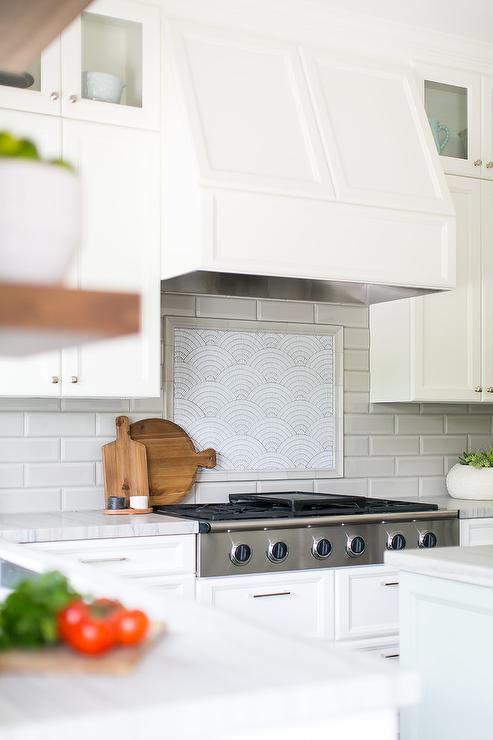
Image source – Decorpad
Wood Range Hoods – Installation Key Factors
Installing a kitchen wood hood requires careful planning, precise measurements, and attention to detail to ensure it is properly installed and functioning. Although with a little help, you can install these hoods yourself, it’s always better to seek professional help to ensure safety and proper installation, as they can be pretty heavy and harm you or your kitchen hardware if dropped. Let’s take a look at the key installation factors!
- The location of your wood hood – Make sure that the hood is centered right over the cooking surface. You can mark the center point for mounting the hood at the start of your project using a pencil & then attach the cleat in the middle to begin the installation.
- Take ductwork into consideration – This is one of the main factors that should not be ignored. The ductwork should be properly sized and installed for efficient ventilation. Make sure to connect the vent to the outside of the house or the ceiling in a way that carries the smoke and steam out of your house promptly, without any obstructions.
- Attaching the wood hood frame/apron – The next step involves building & attaching the frame or apron in the designated area. Ensure your frame is strong enough to hold the hood’s weight and any additional decorative elements attached.
- Install the vent insert/blower into the wood hood, providing the suction to pull smoke and steam out of your kitchen. Connect the ductwork to the vent insert/blower to test the ventilation system to ensure everything is working properly.
- Install the wood hood onto your frame – Remember to check that everything is leveled and securely attached using a nail gun, adhesives, and box beam levels & then install the wood hood onto your frame.
Add your decoratives – Once everything is in place, you can add decoratives such as corbels, trims, plants, or metallic add-ons.
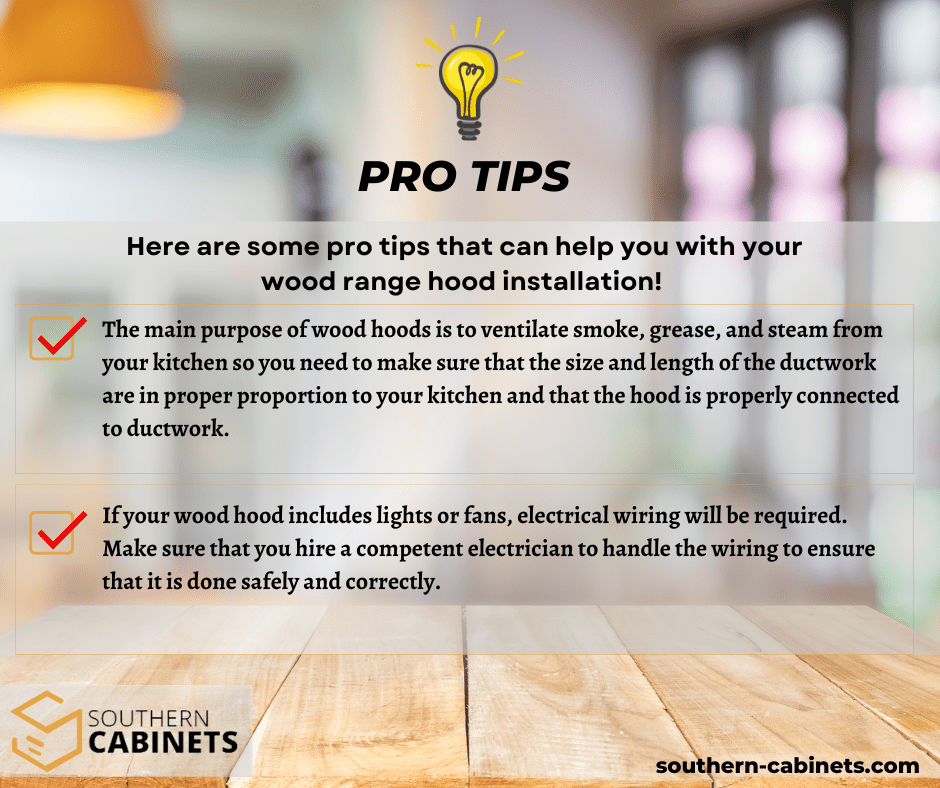
Benefits of Kitchen Wood Hoods
Wood hoods provide functionality and killer aesthetics to your kitchen, given that they are properly installed and maintained, ensuring optimal performance and longevity. Let’s take a look at their amazing benefits.
Promotes Effective Ventilation & Prevents Humidity
These hoods are made to ventilate smoke, steam, and unpleasant odors from your kitchen. They not only help keep your kitchen smelling fresh & improve its air quality but also prevent your wooden cabinets from humidity which can erode their longevity or cause molding. Moreover, these hoods also help to keep your fruits and vegetables fresh and increase their shelf life.
Aids in Deep Cleaning & Increases Kitchen Lifetime
While wood vent hoods prevent your kitchen from accumulating dust and grease, it is easier to clean them up without using chemicals and hazardous materials. This also means that you don’t have to inhale chemical fumes, and your kitchen hardware can last longer, increasing the overall value of your home. On that note, remember to clean your hood filters as well!
Noise Reduction & Additional Lighting
Most wood hoods come equipped with fans or blowers that help reduce noise levels in your kitchen, which is particularly beneficial if you have an open-concept kitchen connected to other living spaces in your home. In addition to this, the lights on these hoods can help you cook better and clean better.
Good Value for Money
Wood hoods are a durable addition to your kitchen as they are made from high-grade quality wood, are designed to withstand heat and moisture & last for a long time. This means that even in the years to come, you can recoup some of the wood hood’s cost, making them a cost-effective investment.
Aesthetics & Customizations
Wood range hoods serve as your kitchen’s decorative center of focus, adding warmth and character to the space. As these hoods come in a variety of styles and finishes, you can choose one that complements the style of your kitchen and fits its exact specifications, which means you don’t have to worry about replacing them every time you renovate your kitchen. This can save you a lot of money in the long run while adding charisma to your culinary haven!
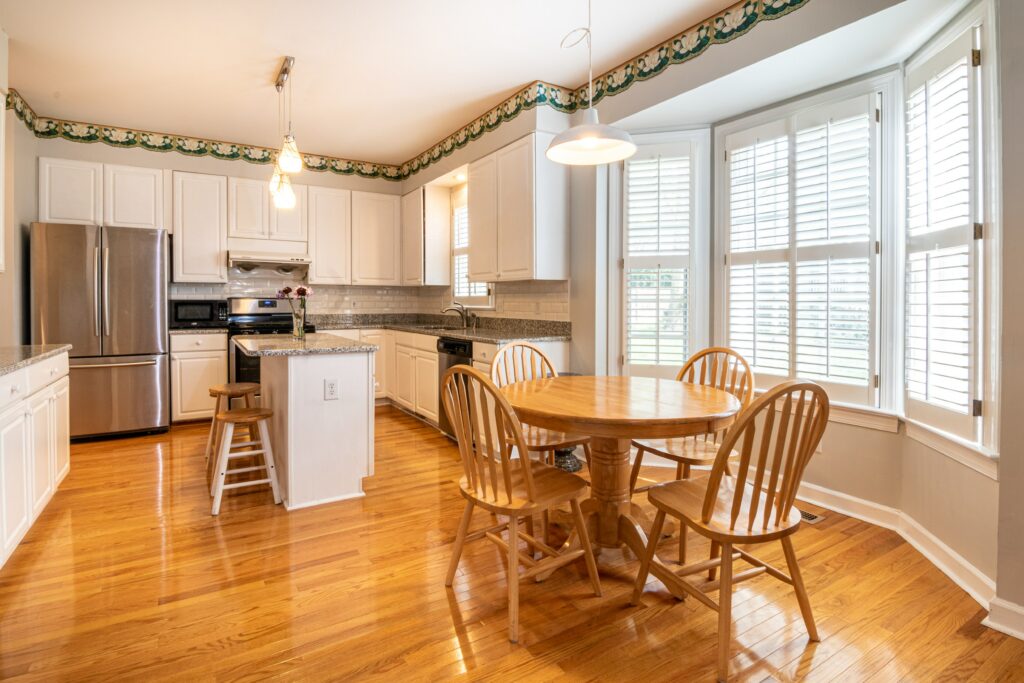
Top Wood Stove Hood Ideas to Upgrade Your Kitchen into a Luxurious Sanctuary
People often feel overwhelmed about which wood range hood style would suit their kitchen the best as there are so many options available in the market, from rustic farmhouses to sleek and contemporary ones. The possibilities are endless, whether it’s the materials, colors, or styles. That said, let’s look at the top wood stove hood ideas you can consider for a deluxe look. While picking one out, be mindful of your kitchen layout, cabinets, backsplash colors, wood hood size, preferred materials, and wood hood types such as wall-mounted, under cabinet, or island.
Striped Hood Style
Range hoods feature a striped pattern in the grain of the wood. This pattern is achieved by cutting the wood at a certain angle to create a unique and visually appealing design. This hood looks splendid with frameless cabinets that bring uniformity across your kitchen space.
Curved Hood Style
Range hoods feature a curved shape. This design creates a sleek and elegant look and can be customized to fit any kitchen style. You can pair it with modern shaker cabinets to bring out the beauty of your kitchen.
Tapered Hood Style
These hoods feature a narrowing shape from the base to the top giving a more transitional look to your kitchen. This hood design creates a unique and visually appealing look, especially if you add it with modern textured or shaker cabinets that complement various kitchen styles.
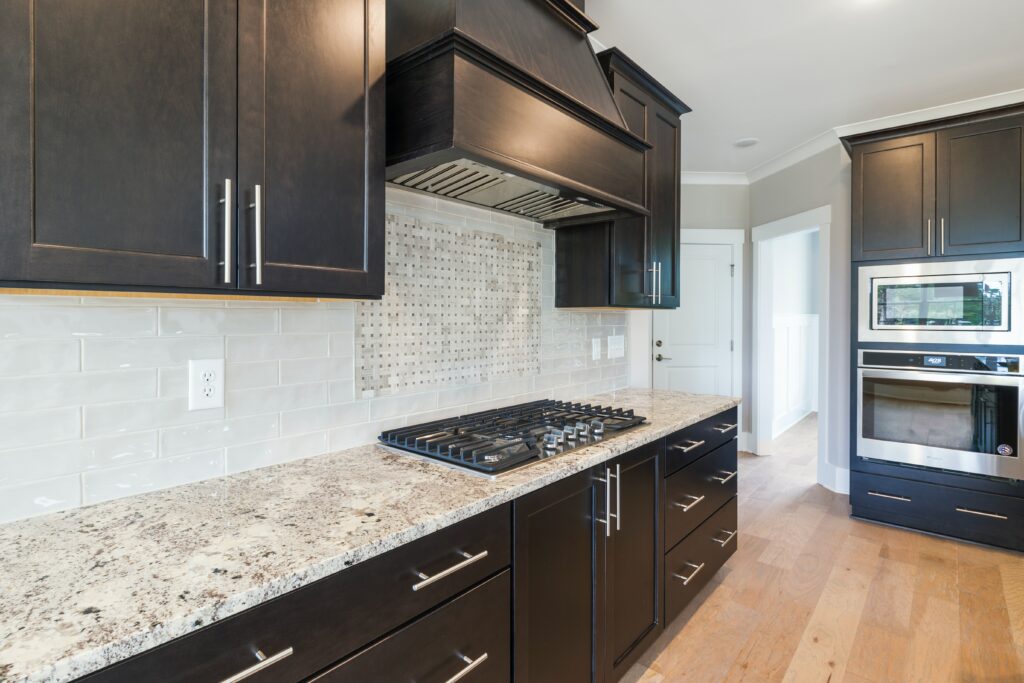
Boxed Hood Design
If you are into contemporary designs, this one is simple and understated, as it features a rectangular shape with clean lines and sharp angles. Combining it with European cabinetry gives your kitchen a versatile look.
Sloped Wood Hoods
These hoods are sloping, wider at the base, and narrower at the top. This design creates a streamlined look and works well with traditional cabinets such as framed ones.
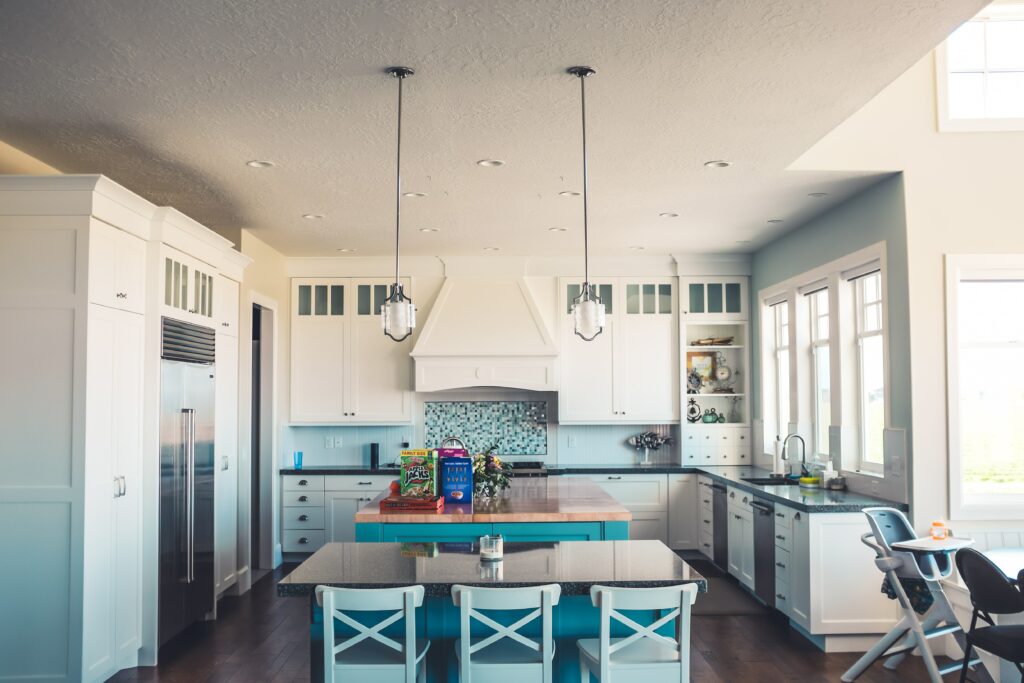
Takeaway
Traditional kitchen wood hoods are not just a practical addition to any home kitchen, but they also add a touch of elegance and sophistication with their natural wood finish and stylish designs. These hoods enhance your kitchen space’s overall look and feel while providing essential ventilation while cooking. Whether you prefer a classic or modern look, these wood hoods can transform your kitchen into a beautiful and functional space you’ll love for years.
FAQs
Wood hood ranges are quite popular among the majority as they are durable, traditionally aesthetic, and have a natural, warm, and elegant look to a kitchen. Wood hoods come in many materials and styles, depending on your requirements. You can combine your hoods with other materials, such as metal or glass, to create a unique and stylish look.
There are two types of hoods, ducted/vented and ductless/recirculating. Ducted hoods are more efficient in removing smoke and filtering the air as they expel the air outside through the duct. In contrast, ductless hoods only filter the polluted air through a carbon or charcoal filter and recirculate the filtered air back into the kitchen.
Which wood hood suits better in your kitchen depends on your kitchen layout, how much you cook, and how much you are willing to spend. Ducted hoods are often preferred over ductless ones as they are more efficient and keep your kitchen dry and pollutant free. However, a ductless hood might work for you if your kitchen doesn’t support an outside vent or you have a low budget.
